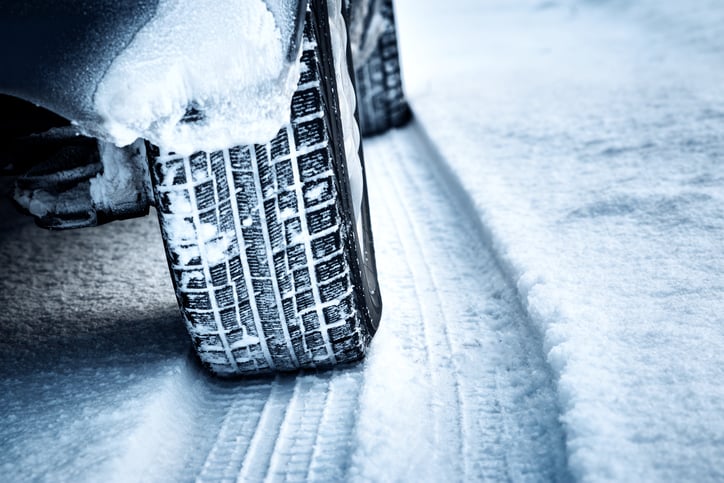Tires can be a little wacky during the winter and the cold months. Should you under-inflate your tires during the winter? Is that the safest thing to do? This article has your answers.

.jpg)
Should You Under-inflate Your Tires in Winter?
Under-inflating your tires can give you more traction on snowy roads; but is this a solid strategy, or a tip you can skip?
Snow tires, all-wheel drive, four-wheel drive, bags of kitty litter in the trunk - people will do just about anything to gain an edge when driving in snowy, icy, winter weather. For the most part, these strategies are good ideas. After all, winter-slick roads raise the risk of having an accident, and the best way to survive a car accident is to prevent one from happening in the first place. One winter driving trick that some people swear by is under-inflating their tires.
Why do people under-inflate their tires?
To understand why some people think under-inflating tired in winter is a good idea, you need to know what's happening when your car goes into a skid (besides everyone in the car freaking out). No matter what the time of year, your car needs traction to stay on the road. That friction allows the tire to grip the road surface and not slide all over the place. The more traction you have, the better control you have. One of the key factors in traction is the tire's contact patch or the amount of tire that's physically touching the road. The bigger the contact patch, the more traction.
That's what under-inflation aficionados are thinking about when they let some of the air out of their tires in winter. When you under-inflate a tire, it droops, letting more of the tire touch the road. In certain cases - like driving in some snowy conditions and on sand - under-inflating your tires is a great tactic.
Why under-inflating might not be the best thing to do.
There is, however, a rub when it comes to under-inflating winter tires, and it goes back to the enlarged contact patch. Extra traction is a good thing when you're driving in the snow, but it becomes a not-so-good thing once the roads are plowed. Under-inflated tires will give you (believe it or not) too much traction, which will lead to difficult steering - and a car you can't steer well, obviously, isn't safe. Also, depending on the depth of the snow you're driving in, properly inflated tires can sometimes easily dig through the snow to the pavement below, whereas the wider under-inflated tires will ride only on the surface of the snow. Finally, under-inflation damages your tires and wheels.
So, under-inflating your tires is one winter driving tip that you can definitely skip. Now, keeping a few dozen pounds of kitty litter in your trunk is another story.
To view the original article, click here.